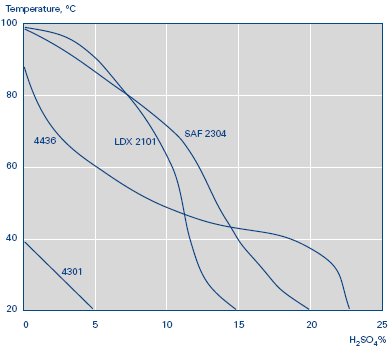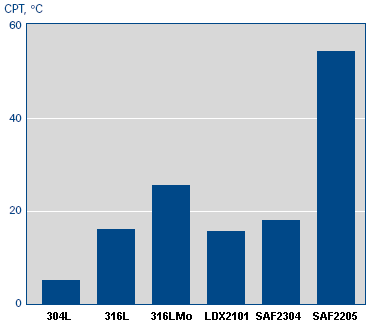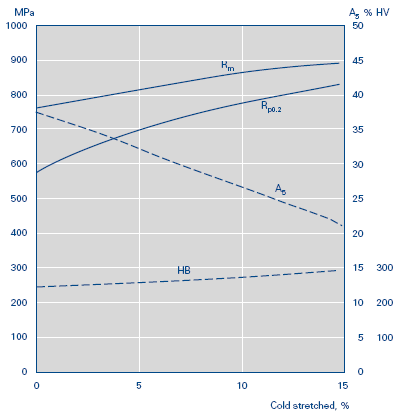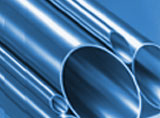Flange Fittings Pipe China Supplier www.wilsonpipeline.com
The inherent oxidation resistance and elevated temperature strength of stainless steel finds useful application in buildings and structures where fire resistance is very important. The most useful family of stainless steel for these applications is theaustenitic, but the short-term nature of fire means that embrittlement should not be practical issue and so the ferritic andduplex families can also be considered.
As materials, stainless steel, do not have an intrinsic ‘fire rating’. Tests to assess fire resistance are done on specific fabrications under precise conditions. This is covered by BS476 parts 20, 21 (load-bearing elements) and 22 (non-load-bearing elements).
Design software which automatically calculate the behaviour of loaded stainless steel sections in a fire can be accessed at Stainless Steel in Construction.
Fire testing
BS 476 covers fire testing on building material and structures. Many of the parts of this standard are not directly relevant to stainless steel.
Parts 4, 6,7, 11, 12, 13, 15 in particular are not appropriate to stainless steel as these deal with tests such as:
combustibility (ignitability from flame impingement or thermal irradiance)
fire propagation
surface spread of flames
heat emission at 750°C
Stainless steel are not ignitable and will also not assist in the propagation of fires by flame spread. The surface of stainless steel is normally inert and stable in oxidizing conditions, such as those found in most flames and heat sources
However to satisfy the requirements of BS476 and similar fire testing standards, tests need to be done on specific fabricated components. Stainless steel, as a material, does not carry a ‘fire rating’.
Results of fire testing on stainless steel components
Tests done for Stewart Fraser Ltd. on their fire resistant 316 type doors and frames to BS467 part 22 showed that after 60minutes, the temperature on the ‘safe’ side of the door only reached 98°C. (These doors have a 316 frame and contain an insulating non-combustible board filling.)
The test was terminated after 2 hours 10minutes with the doors and frames fully in tact.
The only damage was due to thermal distortion and some discoloration of the steel on the ‘safe’ side. The fire on the ‘attack’ side was fully contained by the doors for over two hours.
Tests done on 1.4362 (2304) type duplex, supplied for testing by Avesta AB 1991, and fabricated into a clad ships bulkhead, also demonstrates the fire resistance of stainless steels.
The fabricated bulkhead with a 1.5mm thick 1.4362 corrugated profile skin and ceramic wool insulating filler performed satisfactorily under a simulated hydrocarbon fuel fire. The ‘attack’ temperature reached 1100°C and radiated a bright orange colour after only 15 minutes. Some distortion and attendant insulation smoke were recorded during the tests, but after 40minutes the temperature on the ‘safe’ face was still below 30°C. This surface temperature had risen to around 110°C after 60 minutes.
After 120 minutes it was noted that the test unit was continuing to satisfy the criterion (International Maritime Organisation ResolutionA517 (XIII)) for resistance to smoke and hot gases penetration.
Manufacturers of products and components for fire resisting applications should be consulted at an early stage to avoid costly design changes at a later stage.
Heat resisting properties of stainless steel
Most stainless steel grades that would be considered for building applications ie the 304 (1.4301) and 316 (1.4401) types have useful, long-term oxidation resistance at temperatures over 800°C and do not begin to melt until temperatures of over 1375°C are reached. It is unlikely that uniform, sustained high temperatures like these would be reached in short term ‘transient’ fire conditions.
The short term tensile strength, elastic (Young’s) modulus and physical properties of thermal expansion and conductivity are of interest in assessing stainless steels for fire resistance.
The 304 and 316 austenitic types loose strength to about 55% of their ambient temperature levels at 700°C, the 0.2% proof strengths being around 225 to 308 Mpa (N/mm2) at ambient to 95 to 131 Mpa (N/mm2) at 700°C. The modulus, typically around 200KN/mm2 at ambient temperatures, falls to around 144 KN/mm2 at 700 °C for type 304. This is significantly different from carbon steels, where the modulus at 800 °C can be as low as only 9% of the ambient value.
The higher thermal expansion rates for the austenitic stainless steels means that physical distortion can be a problem in transient fire conditions where thermal gradients are likely to be large.
The thermal conductivity of the austenitic family is lower than ferritics and although this may be useful in containing heat flow through a structure, it may contribute to thermal distortion.
Allowances for distortion and seizing of items like fire doors should be considered.
Source: Zhejiang wilsonpipeline Pipe Industry Co., Limited (www.wilsonpipeline.com)
Flange Fittings Pipe China Supplier www.wilsonpipeline.com









.jpg)
.jpg)





 SGS/BV/MOODY/TUV/Lloyd’s/ABS etc. third party inspection are available. The stainless steel tube and pipe from wilsonpipeline meets mainly the following Standards/Norms and grades. Here you will see some informations about our materials and products.
SGS/BV/MOODY/TUV/Lloyd’s/ABS etc. third party inspection are available. The stainless steel tube and pipe from wilsonpipeline meets mainly the following Standards/Norms and grades. Here you will see some informations about our materials and products.